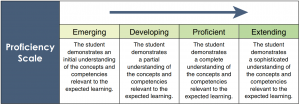Communicating Student Learning: BC Ministry of Education’s Draft K-9 Student Reporting Policy (2019) and Pilot Program
British Columbia has a redesigned curriculum, which means that we are also redesigning how we assess and report on student progress. The goal of communicating student learning and progress is to ensure that families are well informed about their children’s progress. As a result, we are working to support new practices for communicating about student learning.
This year, schools in Burnaby, and across the province are participating in a pilot for communicating student learning in the first term of the 2021-2022 school year.
_____________________________________________
Division 1 & Ms. Derksen’s Communicating Student Learning Plans for 2021-2022
Term 1
- What does this entail?:
- 10 minute, virtual calls (using Microsoft Teams and Bookings) between family, child, and classroom teacher
- Appointments will be available within instructional hours
- Appointments and special arrangements can be made to fit the needs of each family and their availability
- Students will present their learning progress and life-at-school with examples and details from social and curricular activities, projects, and lessons
- Students have carefully collected electronic copies of their favourite learning opportunities and projects throughout the term in their Digital Learning Portfolio (in Microsoft OneNote)
- For the first term there should be five inclusions (minimum), which include, but are not limited to:
- 2 Photo Reflections with Core Competency Connections
- 1 Numeracy Reflection
- 1 Literacy Reflection
- 1 Reflection of their choice (may be any of the above or may focus on another curricular subject area)
- For the first term there should be five inclusions (minimum), which include, but are not limited to:
- Students will continue to collect and archive learning evidence and samples in their Microsoft OneNote Learning Portfolio throughout their grade 6 and 7 learning journeys
Term 2
- Formal Report template with evidence directly linked to Digital Learning Portfolios
Term 3
- Formal Report template with evidence directly linked to Digital Learning Portfolios
Frequently asked questions
Here are some anticipated questions from families and suggested answers from school districts:
- Q. Why does the Ministry of Education have so many options for reporting student
progress in Grades K-9?
• In 2016, when the new K-9 curriculum was mandated across the province, the Student Reporting Policy (2016) was updated to include a flexible option (Interim Option A: K-9). The traditional reporting policy also remained intact (Option B: K-12).
• Interim Option A has enabled schools and districts to try innovative approaches to student progress reporting.
• In the 2019/20 school year, formal pilot participants are trialing a new, DRAFT K-9 Student Reporting Policy (2019), which is a revised Option A. Feedback from the piloting schools and districts will help inform revisions to provincial legislation and policy for K-9. - Q. What has changed with the draft reporting policy?
Informed by research on effective practices and by thorough engagement with parents and educators, the DRAFT K-9 Student Reporting Policy (2019) features:
• more timely and flexible communication
• strength-based, individualized feedback on student progress
• standardized descriptive four-point provincial proficiency scale for K-9
• student selected evidence-based reflection during the school year in addition to the end-of-year student self-assessment of Core Competencies - Q. What is the value of the school and/or district participating in this pilot project?
Participating in this pilot project provides students and parents in the school or district with an opportunity to share insights about the piloted practices. It also enables schools and districts to have a voice in the development of the final K-9 Student Reporting Policy, and provides educators with more time and opportunities to learn together about how best to support student learning by trialing draft policy and guidelines. - Q. Will the school’s or district’s participation in the pilot project affect or disrupt my
child’s learning?
School or district participation in the pilot project is not intended to disrupt or negatively affect students’ learning. The DRAFT K-9 Student Reporting Policy (2019) supports student-centred assessment and reporting practices. Research has shown that when students are provided with opportunities to be engaged in the assessment process, they are better able to describe what and how they are learning, and they experience a greater sense of ownership of their learning. - Q. What is a point of progress?
Points of progress are the meaningful, varied, and responsive ways in which teachers provide parents with information about how their child is progressing in their learning and what the child can do to extend their understanding. Points of progress may take many forms, including but not limited to digital portfolio posts, conferences, phone calls, written comments, and student goal setting and reflections on learning. - Q. Will students be responsible for assessing themselves?
Students will be more involved in the assessment process – from co-creating criteria for learning to reflecting on their learning or engaging in self-assessment. However, teachers continue to organize learning, provide descriptive feedback, and evaluate student progress. - Q. How will we know if our child is making progress as a learner?
Teachers and students will provide evidence of student learning, along with descriptive feedback and/or proficiency scale descriptions. - Q. What is the provincial proficiency scale?
The four-point provincial proficiency scale will be used to communicate student progress in all areas of learning. It describes levels of proficiency in relation to the learning standards of the provincial curricula.
Resources:
British Columbia Ministry of Education. (2019). DRAFT K-9 Student Reporting Policy (2019) and Pilot: Communicating with Families. British Columbia Ministry of Education.
